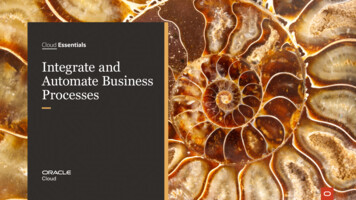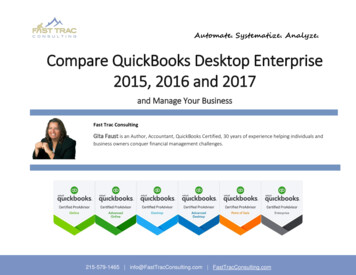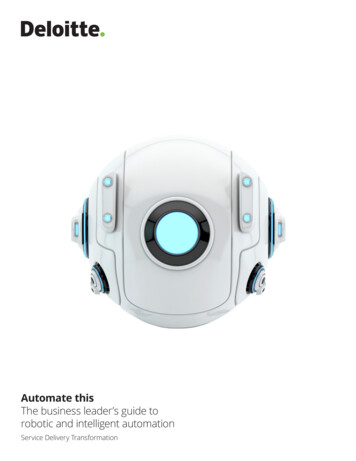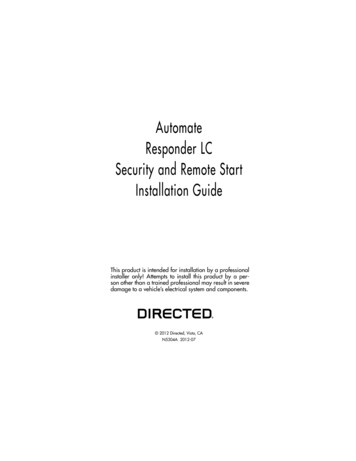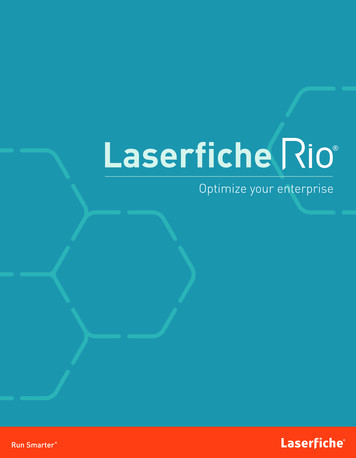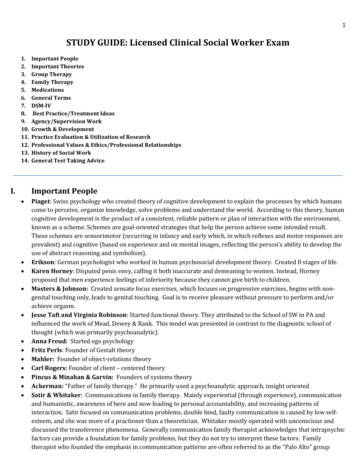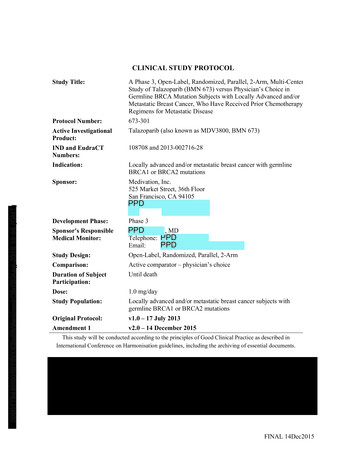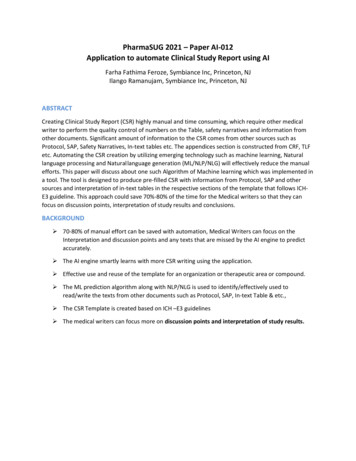
Transcription
PharmaSUG 2021 – Paper AI-012Application to automate Clinical Study Report using AIFarha Fathima Feroze, Symbiance Inc, Princeton, NJIlango Ramanujam, Symbiance Inc, Princeton, NJABSTRACTCreating Clinical Study Report (CSR) highly manual and time consuming, which require other medicalwriter to perform the quality control of numbers on the Table, safety narratives and information fromother documents. Significant amount of information to the CSR comes from other sources such asProtocol, SAP, Safety Narratives, In-text tables etc. The appendices section is constructed from CRF, TLFetc. Automating the CSR creation by utilizing emerging technology such as machine learning, Naturallanguage processing and Natural language generation (ML/NLP/NLG) will effectively reduce the manualefforts. This paper will discuss about one such Algorithm of Machine learning which was implemented ina tool. The tool is designed to produce pre-filled CSR with information from Protocol, SAP and othersources and interpretation of in-text tables in the respective sections of the template that follows ICHE3 guideline. This approach could save 70%-80% of the time for the Medical writers so that they canfocus on discussion points, interpretation of study results and conclusions.BACKGROUND 70-80% of manual effort can be saved with automation, Medical Writers can focus on theInterpretation and discussion points and any texts that are missed by the AI engine to predictaccurately. The AI engine smartly learns with more CSR writing using the application. Effective use and reuse of the template for an organization or therapeutic area or compound. The ML prediction algorithm along with NLP/NLG is used to identify/effectively used toread/write the texts from other documents such as Protocol, SAP, In-text Table & etc., The CSR Template is created based on ICH –E3 guidelines The medical writers can focus more on discussion points and interpretation of study results.
SOLUTIONUSE OF AI (ML/NLP/NLG) Prediction Accuracy:The text from PDF document such as Protocol/SAP are extracted using ML/NLP and thetexts are understood by the system engine. Identifying Individual Sections:oML model is used to predict the best matching content from various source documents(Protocol, SAP, In-text etc.,) for all the sections in a CSR.oNamed Entity Recognition (NER) which is a subprocess of NLP is used to identify thedrug names, dosages, duration of drug, sponsor name and protocol number. Title Page & Synopsis:Customized ML Algorithm used in title page and study synopsis. Deep Learning Model usage:The section 10 (study population), section 11 (results) and section 12(safety evaluation)are more of in-text tables that utilizes Deep Learning Model to find the best matching In-texttables.
PROCESS SUMMARYHIGHLIGHTS OF TOOL
WORKFLOW INTEGRATIONCSRT WorkflowMedicalWriterOverallCSR Draft preparedfrom Prefilled CSRtemplateReceives reviewer’scommentUpload Draft CSRdocument in iews thedocumentReviewpass?YesReviewpass?NoSends for approvalSends for correctionYesFinal CSRT readyApproval DoneDASHBOARD
CONCLUSIONThe generation of Clinical study Report (CSR) can be automated to a significant part with help of AItechniques such as Machine Learning (ML), Natural language processing (NLP) and Natural languageGeneration (NLG). The use of standard templates (early phase or late stage) and a flexibility to configureit based on study objectives & the information collected will save good percentage of medical writer’seffort spent on creating the document. Prediction accuracy can be improved with more CSR created byusing the application.CONTACT INFORMATIONFarha Fathima FerozeProduct ManagerSymbiance Inc500 College Road East Suite 220Princeton NJ 08540609 243 9050 EXT: 115
The generation of Clinical study Report (CSR) can be automated to a significant part with help of AI techniques such as Machine Learning (ML), Natural language processing (NLP) and Natural language Generation (NLG). The use of standard templates (
